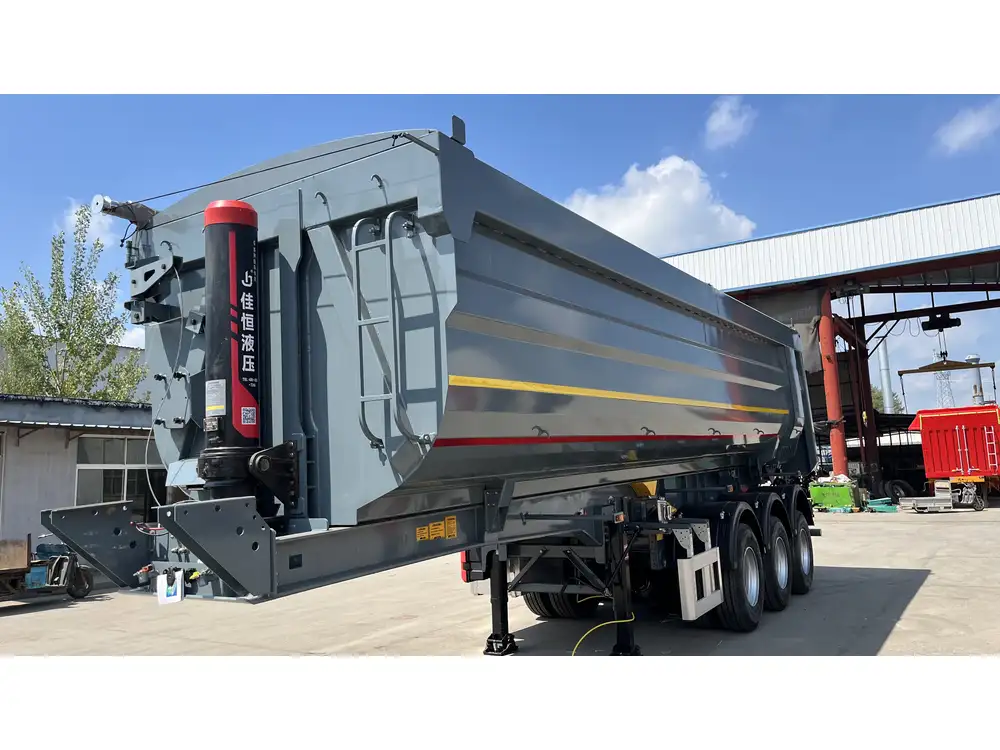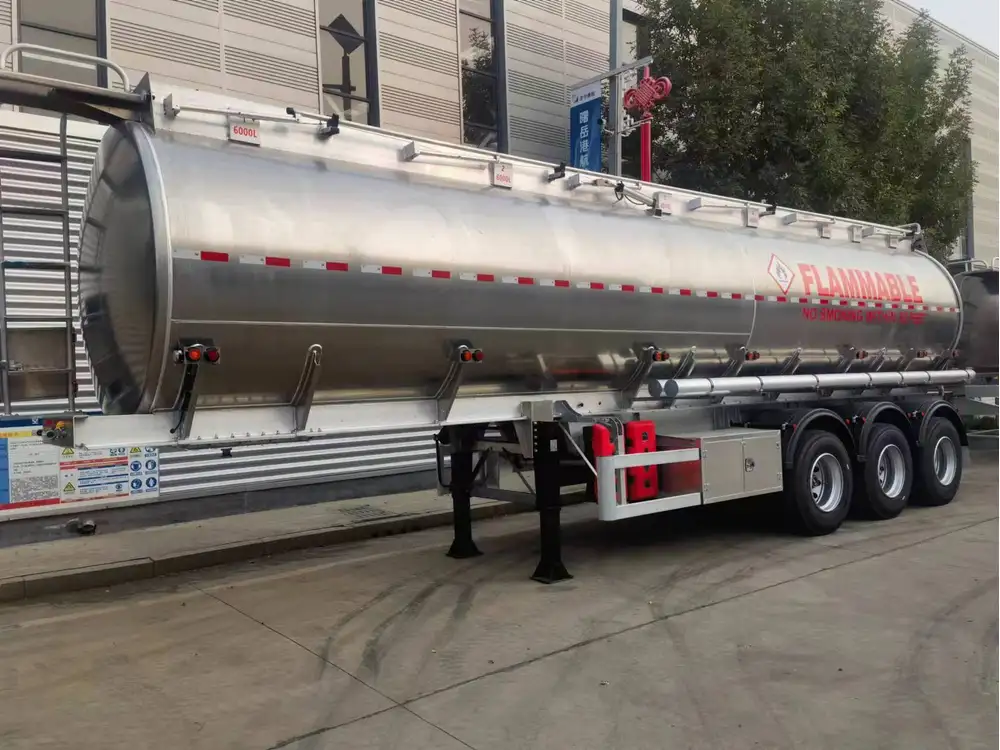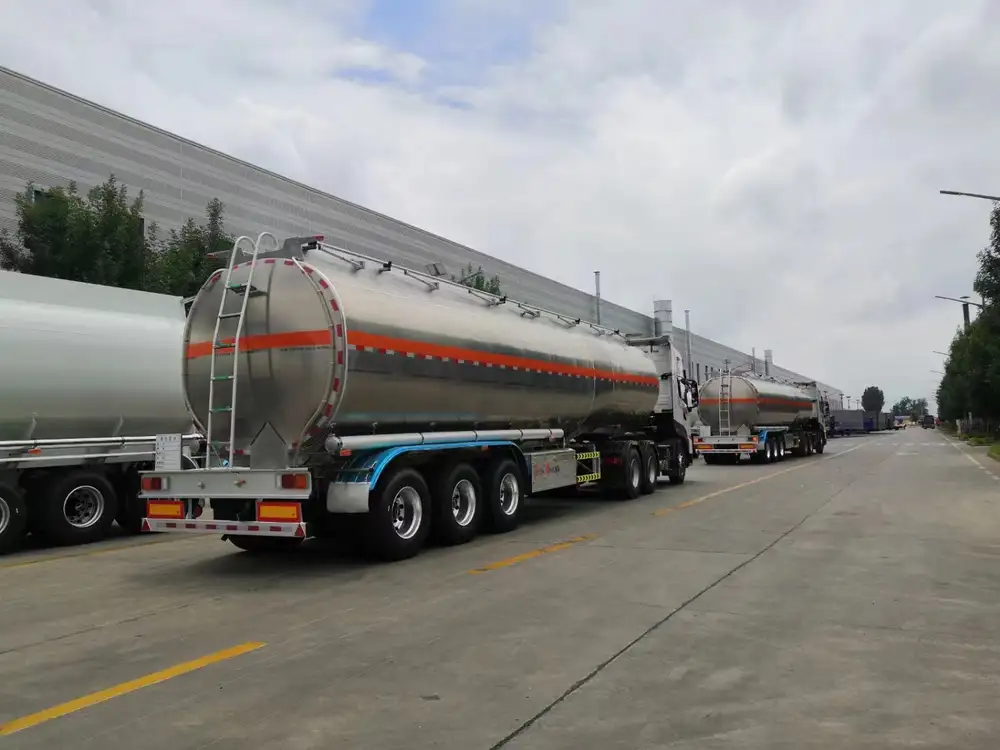Introduction to Semi-Trailer Dimensions
When it comes to logistical planning and fleet management, understanding the dimensions of semi-trailers is crucial. Among the myriad of specifications, one critical attribute is the height—specifically, how high a semi-trailer is off the ground. This measurement can directly impact loading procedures, vehicle stability, and regulatory compliance. As we delve into this topic, we aim to provide a detailed analysis to meet the needs of manufacturers, operators, and transport planners alike.
Standard Height of Semi-Trailers

Industry Standards
A semi-trailer typically ranges from 13.5 to 14.5 feet in height (approximately 4.1 to 4.4 meters). However, several factors influence the effective height:
- Trailer Type: Different types of semi-trailers—such as flatbeds, refrigerated units, and dry vans—will exhibit variance in height while maintaining compliance with regulations.
- Configuration: The height of a semi-trailer can also be affected by its axles and suspension systems. For example, a trailer equipped with air-ride suspension might have fluctuating heights based on load and inflation.
Common Trailer Types and Their Heights
| Trailer Type | Typical Height (Feet) | Common Characteristics |
|---|---|---|
| Standard Dry Van | 13.5 – 14.5 | Enclosed space for general freight, stable loading |
| Refrigerated Trailer | 13.5 – 14.5 | Insulation and refrigeration systems for temperature control |
| Flatbed Trailer | 12.5 – 13.5 | Open design, offers flexibility for cargo height |
| Lowboy Trailer | 11.0 – 12.0 | Specialized low-profile for transporting heavy equipment |
Factors Affecting Semi-Trailer Height

Suspension Systems
The suspension system plays a vital role in determining how high a semi-trailer is off the ground. Two primary types of suspension systems are prevalent:
Leaf Spring Suspension
- Height Consistency: Offers a stable height but can result in more vibrations during transport.
- Load Capability: Generally suited for moderate loads and usage.
Air Ride Suspension
- Adjustable Height: Can alter the trailer height depending on load, providing a smoother ride.
- Enhanced Stability: Reduces sway, promoting safety and comfort during transport.
Tire Selection and Load
The tires installed on a semi-trailer also contribute to how high it sits off the ground. Wider tires can elevate the vehicle, while the overall diameter affects the clearance from the road. The load carried by the trailer shifts the height intermittently due to compression, which is especially important to consider for:
- Heavy Hauling: Requires careful load management to maintain optimal height.
- Regulatory Compliance: Staying within legal height limits is essential to avoid violations.
Legal Considerations and Regulations
Understanding legal frameworks is critical for semi-trailer operators. Various jurisdictions impose strict restrictions on maximum trailer height:
Federal Regulations: In the United States, the Federal Highway Administration (FHWA) generally permits a maximum vehicle height of 13.5 feet. However, some states allow tall vehicles with special permits.
State Variations: It is essential to check local laws, as they can vary significantly from state to state. For example, some bridges have lower clearance heights, which necessitate planning routes accordingly.

Importance of Compliance
Failing to comply with federal and state regulations can result in:
- Fines: Financial penalties for exceeding height limits.
- Operational Disruption: Legal issues may lead to delays and downtime, affecting logistics and delivery schedules.
How to Measure Semi-Trailer Height Accurately
Tools Required
Accurate measurement of a semi-trailer’s height can be conducted using:
- Tape Measure: Ideal for straightforward height marking from ground to the highest point.
- Laser Height Gauge: Offers precision in industrial settings where accuracy is paramount.

Measuring Process
- Level Ground: Ensure the trailer is parked on a level surface to obtain an accurate measurement.
- Identify the Highest Point: Usually, this is the upper edge of the roof or any accessories such as vents.
- Measure from Ground Up: Use the tape measure to find the distance from the ground to the highest point.
- Record the Height: Document the measurement for regulatory compliance and operational records.
Implications of Height in Loading and Unloading
Loading Dock Compatibility
The height of a semi-trailer has significant implications for loading and unloading processes:
- Dock Height: Standard loading docks range from 48 to 52 inches off the ground. Semi-trailer height greatly influences how these interacts.
- Equipment: Forklifts and pallet jacks must be suitable for the trailer height to ensure safe and efficient loading.

Impact on Workforce Safety
A mismatch between trailer height and loading dock or ground level could lead to:
- Injuries: Falls or accidents can occur if workers are forced to reach awkwardly.
- Equipment Damage: Misalignment during unloading may damage cargo handling equipment.
Recommendations for Efficient Handling
- Use Adjustable Ramps: Facilitate easier transitions between trailer and dock.
- Training Programs: Educate employees on safe handling practices tailored to the specific height of the vehicles.
Resolving Height-Related Issues in Fleet Operations

Maintenance of Suspension and Tires
Regular inspection of the suspension and tires is critical to maintaining optimal height and performance:
- Check Tire Pressure: Maintain the proper inflation as specified by manufacturers for stable height.
- Suspension Checks: Inspect for wear and adjust air settings to consistently meet the established height.
Load Management Strategies
To ensure that trailer height remains compliant and safe, introduce robust load management protocols:
- Weight Distribution: Educate drivers on optimal weight distribution across the axles to prevent alterations in height.
- Load Checks: Regularly assess loads before transport to avoid height-related compliance issues.
Conclusion: The Importance of Knowing Semi-Trailer Height
In the realm of logistics and transportation, understanding the height of a semi-trailer is more than just a matter of measurements—it is intertwined with safety, efficiency, and compliance. By grasping the various factors influencing trailer height and implementing comprehensive management protocols, fleet operators can enhance their operational success while reducing risks.
Whether you are a seasoned transport professional or new to the industry, being informed about semi-trailer dimensions ensures your endeavors remain aligned with legal standards and operational efficiency. Elevating your knowledge on such topics can profoundly impact your business practices, so do not overlook the importance of this critical detail in your logistical framework.



